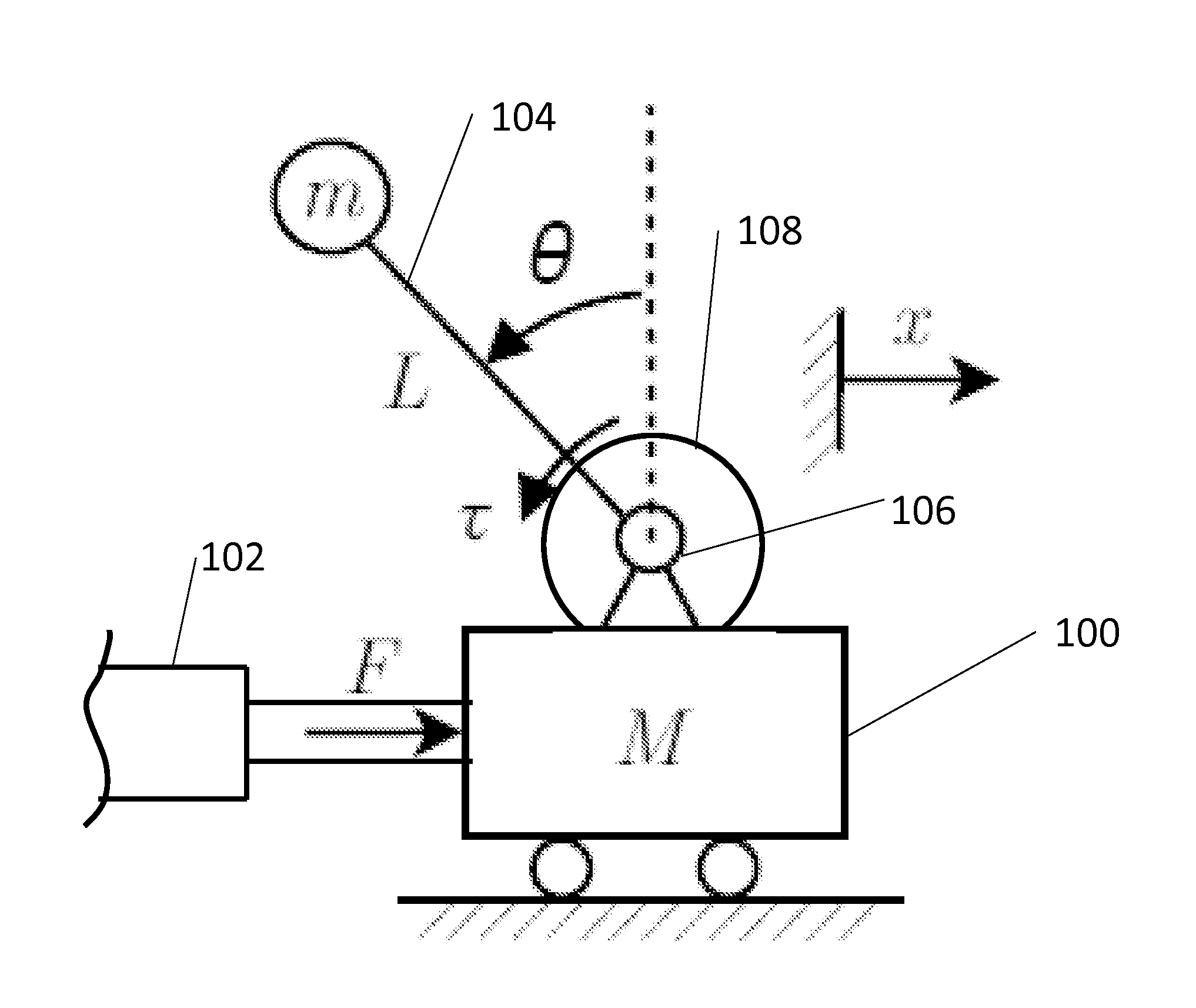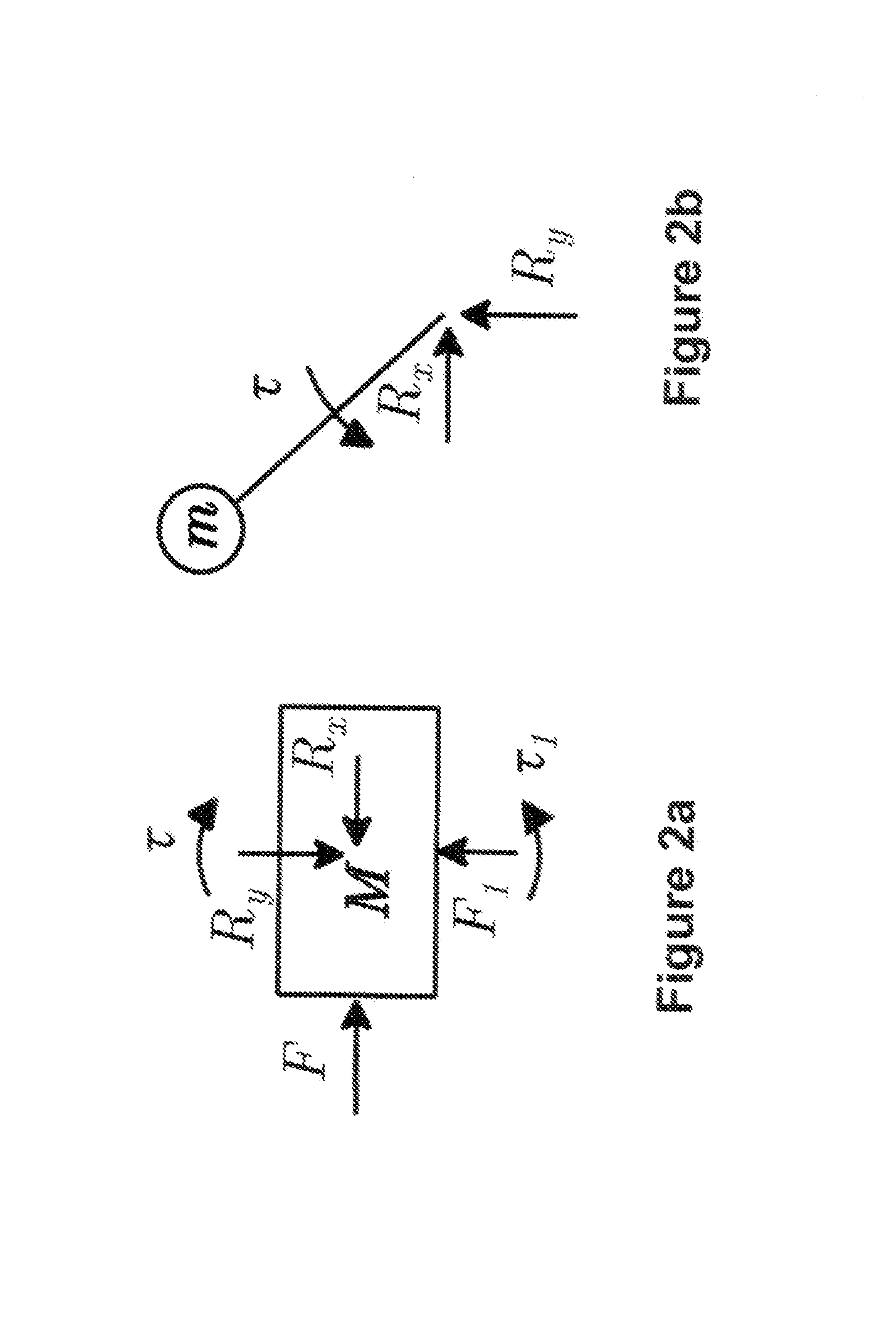On The Dynamic Response of Actuation Devices in Nonlinear Dynamics Systems
a nonlinear dynamics and dynamic response technology, applied in the field of actuation devices, can solve the problems of reducing the effectiveness of the control system, the system operation must be relatively slow, and the dynamic response issue has not been fully explained for the nonlinear dynamics system, and achieves the effect of speed and precision
- Summary
- Abstract
- Description
- Claims
- Application Information
AI Technical Summary
Benefits of technology
Problems solved by technology
Method used
Image
Examples
example and
[0032]Consider the inverse pendulum system of FIG. 1. The conventional approach for constructing a model-based feed-forward control with a linear feedback loop is shown in the block diagram of FIG. 3. In this control system, the input desired motion xd and θd and their related velocities and accelerations are used in the system equations of motion Eqn. (6) and Eqn. (7) to calculate the feed-forward force Fff and torque τff, respectively. In the block diagram of FIG. 3, the actual position of the cart 100 and the pendulum link 104 are indicated as xa and θa, respectively. Their corresponding error signals, i.e., the difference between the desired and actual positions ex and eθ and related velocities are fed back through a (usually a linear PD) controller 200. The sum of the feed-forward and the feedback signals is then sent to the electronic power amplifier 204 via a low pass filter 202, which is used to remove the high frequency components of the signal that are considered...
PUM
 Login to View More
Login to View More Abstract
Description
Claims
Application Information
 Login to View More
Login to View More - R&D
- Intellectual Property
- Life Sciences
- Materials
- Tech Scout
- Unparalleled Data Quality
- Higher Quality Content
- 60% Fewer Hallucinations
Browse by: Latest US Patents, China's latest patents, Technical Efficacy Thesaurus, Application Domain, Technology Topic, Popular Technical Reports.
© 2025 PatSnap. All rights reserved.Legal|Privacy policy|Modern Slavery Act Transparency Statement|Sitemap|About US| Contact US: help@patsnap.com



